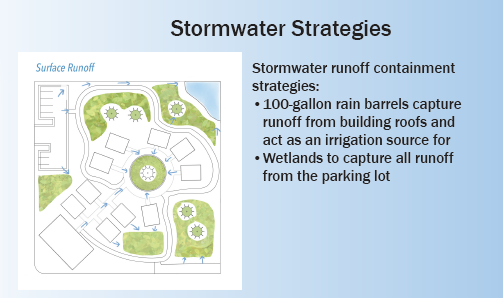Coastal Garden Community
A team from California Polytechnic State University-San Luis Obispo: Naoki Weldo, Jennifer Wu, Gabe Denson, Karina Twergo, Johnathan Garcia, Vy Vu, May Thiri Kyaw
Click the image to view the poster
The Coastal Garden Community was designed to address the growing homelessness crisis by using Envision values to enhance the environmental, social, and economic benefits of our tiny home community. Our community of 10 – 400 square foot homes aims to give families without housing a place to stay and the ability to get back on their feet through our planned amenities. The 10 tiny house units will be nested behind the community center to minimize traffic impacts and reduce noise pollution. Each home faces another, creating a greater sense of connect between all residents of Coastal Garden Community, and appreciation for the surrounding natural environment. The community center includes a shared small laundromat room between all community members and a mixed-use space used for life skills training, mental health seminars, rehabilitation services, and community outreach events which aim to help residents gain necessary skills and network with the citizens of the surrounding city.
Located in the corner of 1st Ave N Street and 2nd St E Street, the community will be the gateway between the greater community and the tiny home residents to foster collaboration and unity between the two parties. The project will also include a parking lot facing 1st Ave N Street to accommodate residents and visitors, a community garden, large open green spaces for outdoor activities like picnics, workout exercises, and walks through the natural landscape, ample bike parking, and space for partnerships with local rideshare and bike share companies to increase the mobility between the residents and outside community. Six existing old-growth trees and a wetland were protected in place while minimal grading allowed for more natural direct runoff on the property. The design includes locally sourced materials, drought tolerant native plants, renewable energy sources, and multiple community engagement spaces.
—Poster presented at ISI’s third annual Virtual Conference (November 16 – 17, 2022)




